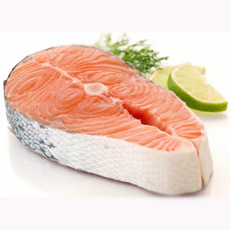TIP OF THE DAY: Fish Fillet Vs. Fish Steak
|
A salmon fillet: no bone, but skin on the bottom. Photo courtesy DailyPerricone.com. |
You’ll note that some fish recipes, like the one below for Pretzel-Crusted Tuna, call for fish steaks. Other recipes call for fillets. What’s the difference? It’s all about the cut. |
|
|
What’s the difference between a fillet and a filet? Just the language, which impacts spelling and pronunciation. Fillet (FILL-it) is English and filet (fee-LAY) is French. |
||
|
FISH STEAK Considered more elegant in appearance than steaks, fillets have been traditionally used by restaurant chefs. More casual eateries are more likely to use salmon steaks these days; and of course, they’re in your grocer’s fresh and frozen fish cases. |
||
|
However, more than a few people claim that bone-in beef steaks taste so much better than boneless cuts. So why wouldn’t it be the same with bone-in fish? This article does a very good job of explaining why the argument for bone superiority may be specious. There are also recipes that require one or the other by definition. Fish and chips, for example, requires fillets. A final consideration: Because they are thicker than fish fillets, fish steaks are less likely to fall apart when cooking. Cod, dorado (mahi-mahi), tuna, larger varieties of salmon, and swordfish are typically cut into steaks. |
||
